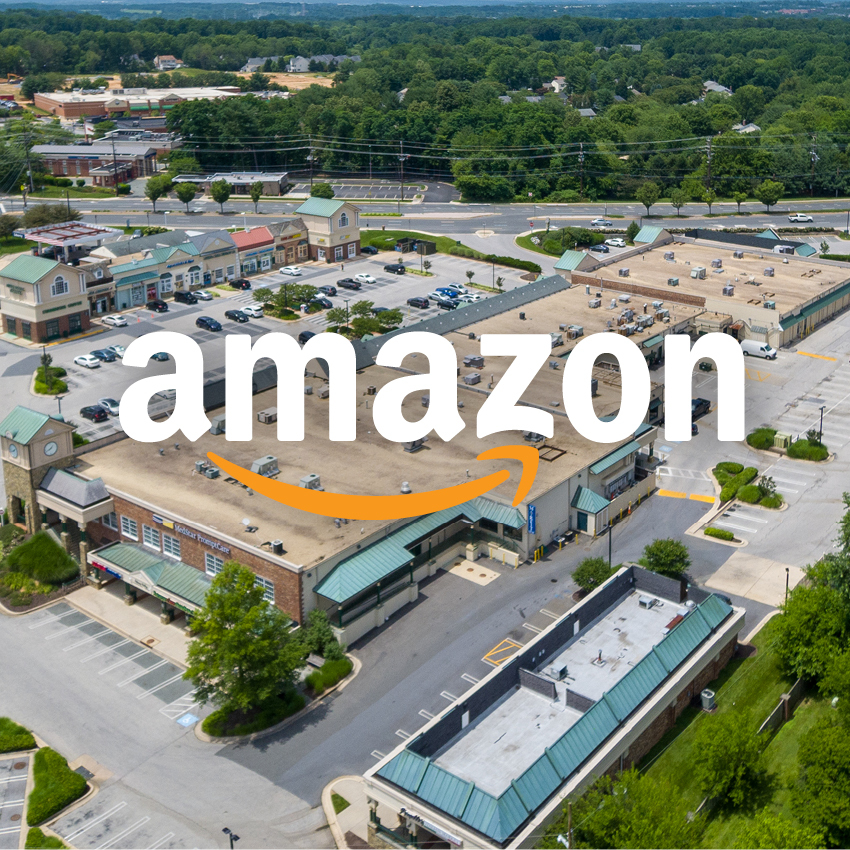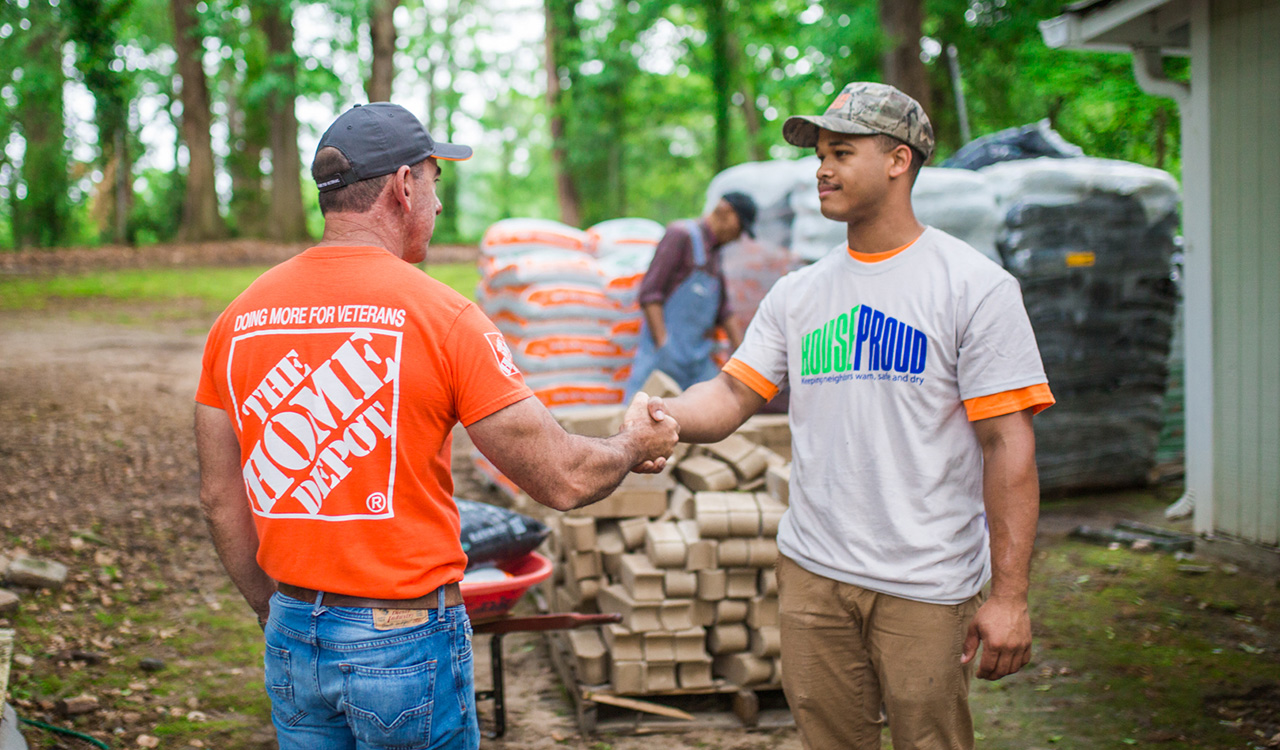Amazon is both the world’s preeminent retail disruptor and a very effective PR machine. The latest post-Bezos buzz revolves around their latest physical store foray: the Department Store. But after the feeding frenzy around that chub, I believe it’s more of a red herring. Simply put, what Amazon is planning will look, feel, and operate like no department store of our time.
Numbers du Jour
We can all agree that Amazon has changed the face of retailing in our time, to say nothing about consumer behavior. They’ve turned technology on its head and use data to formulate strategy rather than simply keeping score. But looking at their own physical store-based sales, they look more dizzying than dazzling. The scoreboard, revealed in Amazon’s most recent annual report, breaks sales into six categories including Online Stores, Physical Stores, Third-Party Seller Services, Subscription Services, AWS (Amazon Web Services) and Others.
[callout]Vacant big boxes are strategically located near Amazon Prime customers and can become ideal combination retail showrooms, pick-up and return centers, and satellite distribution warehouses.[/callout]
While Amazon opened its first bookstore in 2015, they really didn’t jump into the physical store deep end until they plopped down $13.7 billion in mid-2017 for Whole Foods. Today, their “door count” totals 600, including 503 Whole Foods Markets, 12 Amazon Fresh grocery stores, two Amazon Go Grocery stores, 22 Amazon Go convenience stores, 24 Amazon Books stores, 30 Amazon 4-Star outlets and seven Amazon pop-up locations.
Quarterly sales, over the 13 reporting periods from Q4 of 2017 through Q4 of 2020 tell a stunning story. Online Stores revenue increased 188 percent, Third-Party Seller Services, increased 260 percent, Subscriptions Services increased 219 percent, AWS increased 249 percent, Other increased 464 percent, and Physical Stores decreased 11 percent. With this kind of physical store track record, it’s hard to imagine that shareholders would say “we need more of that.”
But It’s the Data, Dummy
While retailers in the new world of omnichannel (aka unified commerce or harmonized retail) have upped their data analytics game in recent years, it’s been a game essentially invented by Amazon with access to a bazillion data points and algorithms up the yin-yang. In fact, many of the keys to “what makes Mary tick” have been derived through the Bezos inspired physical store plays. Profitability apparently has not been a priority, it’s been all about the data.
New Sheriff in Town
With 24-year Amazon veteran Andy Jassy having assumed the CEO position I believe there is likely to be at least a moderate shift away from the Bezos “testing for testing’s sake” ethos. I expect Jassy to embrace more profit-correlated initiatives. This has been best exemplified in Andy’s nurturing AWS into becoming the cash generating giant that has fueled the brand’s black ink stream.
As was recently covered in Jon Fortt’s CNBC interview with Andy Jassy, AWS is a $60 billion revenue run rate business, and it’s growing 37 percent year over year. In 2020 AWS generated more than $13.5 billion in annual operating profits, which represented over 63 percent of the company’s total profits. And that’s from just 15 percent of its total gross revenue.
Triangulating Pain Points
Perhaps, the un-department store razzle-dazzle represents the first major initiative of Jassy’s tenure, with profitability baked into it. Additionally, it has the potential to address several of Amazon’s major challenges while treating them in a holistic, unified manner.
In that same CNBC interview, Andy went on to state that “Amazon spent the first 25 years building a very broad fulfillment center network and over the last 18 months to two years, we’ve had to double that footprint. Further we experienced 2-3 years of growth in 18 months.” I’m certain they are not done.
I believe the underpinnings of the whole physical retail initiative will address many of Amazon’s chief pain points.
- Returnageddon – Like many other online pure plays, ever increasing shipping costs, returns often associated with fit issues, and the expensive, labor consuming process of restocking, all create pain. This is a significant trifecta of losses for Amazon.
- Last mile is miles too long – Competitors Target, Walmart, and Best Buy have thousands of neighborhood stores that have become convenient BOPIS terminals. Meanwhile, Amazon’s massive distribution centers are a costly, inefficient, polluting means of getting goods to the door.
- Private label fashion passion – Amazon has recently surpassed Walmart as the nation’s largest seller of clothing. However, the dominant factor for Amazon’s success is third-party sellers. Additionally, only nine percent of sales are private label. For Amazon to build a private label treasure trove of the likes of Target, they need physical engagement touchpoints.
- ESG is basic as do-re-me – Amazon’s market dominance has cut both ways in terms of public perception. As the planet’s perils continue to affect all aspects of our lives, Amazon must make major strides to convince millennials, Gen Z and the emerging Gen Alpha that Amazon is the solution, not just the problem.
We Just Want to Be Close to You
Amazon has been all about meeting and exceeding consumer expectations. That includes delivering what we want when we want it, and at the price we want to pay. Achieving those goals has been expensive, and a major drag on profits, particularly with fulfillment, and last-mile delivery.
Target was one of the first discounters to begin using many of its 1,900 stores as fulfillment centers, several years back. The initiative cut ecommerce costs and boosted profits dramatically. They are now doubling down on the localizing distribution by adding four new sortation centers, with many more on the horizon.
The Last Mile Conundrum
The media hype surrounding the “un-department store” focuses on Amazon occupying a bite-sized, 30,000 square-foot retail box. Not surprisingly, that’s just north of the mid-20,000 square foot footprint of both Macy’s Marketplace and the new mini Bloomies stores (about 15 percent of the typical Bloomingdales). However, I go back to my previous postulations that these buildouts belong not on 30,000 pads, but as the “front end” of vacant 150,000-200,000 square-foot mall department store anchors.
My reasoning is even the best 250-400 Category-A, A- and B+ malls (out of the 1,100 or so in existence) have at least one vacant or soon to be vacant anchor tenant. These big boxes are strategically located, near Amazon Prime customers and can become ideal combination retail showrooms, pick-up and return centers, and satellite distribution warehouses. This represents a more holistic, macro approach to the previously mentioned pain points. The real estate would be cheap, the shells are ideally suited complete with loading docks, and the turnarounds for repurposing would be shorter than clean-slate buildouts. Let’s do a deeper dive.
‘ZON’S In the Hood
- ‘ZON-up, The Retail Fashion Play – Amazon recently surpassed Walmart as the largest seller of clothing in the nation. Wells Fargo expects their fashion sales to top $45 billion in 2021. According to Marketplace Pulse the breakout of Amazon’s Softline Sales are as follows: 28 percent are First-Party sales, 72 percent are Third-Party sales, and 9 percent are Private Brand sales.
It’s no secret that the key to Amazon’s elevating their soft good’s profitability would be to build some killer fashion brands as Target has been doing. Additionally, a proper stylish store-setting would begin to build buzz around these fashion labels, along with getting the fits right, to reduce costly returns.
Just as Target has done, ‘ZON-up needs to up the ante on retail theater. The stores might even feature a runway for local fashionistas and micro influencers to interact with the goods and their minions, creating social media buzz. This “front-of-the-house” fashion retail story could well represent about 10-15,000 square-feet.
- ‘ZON-tech, Alexa and All Her Friends – Naturally no proper Amazon store would be complete without all the tech goodies that are being designed to echo Alexa’s thoughts. Amazon’s new Fire 4K TV Omni Series (the first Amazon-built TV) enables Alexa to replace the remote entirely, say nothing of integrating all of your home’s smart devices. Expect demos aplenty. This should be good for say 5,000 square feet.
- ‘ZON-down, The Retail Flea Market Play – “Returnageddon” is costing Amazon like every other etailer. What’s worse is the revelation that many of Amazon’s returns and unsold goods are trashed. In 2019 the French newspaper Le Monde reported that “Amazon destroyed an estimated 3.2 million unsold products in 2018.
This summer, an undercover investigation by UK’s ITV News highlighted Amazon destroying millions of returned or unsold merchandise every year; 124,000 items in a single week, in one location, according to a leaked memo. Climate activist Greta Thunberg reacted on Twitter to the investigation footage saying “that’s a clear sign that something is fundamentally wrong,” At a time when all consumers, particularly the most coveted millennials and Gen Z’s are demanding sustainability, this kind of behavior won’t fly. Moreover, who doesn’t want a good deal.
While TJX has been converting closeouts and overstocks into category leading sales for decades, Amazon has its own regional sources of unsold goods. Why not create an ever-changing mix of goods in a high energy, flea-market like venue, complete with music and video? It’s a call to (social) action event. Whether in the rear of the store, or through another door, this sought-after destination should be good for another 10 to 15,000 square-feet.
- Drive-up, Pick-up, & Drop-off – Amazon needs to better segment and localize the last mile distribution. It seems that many smaller, 100,000 square-foot, highly mechanized sortation and micro distribution centers could be just the ticket. This provides new opportunities to cut last-mile costs, while decreasing their carbon footprint.
Retrofitting these facilities with efficient under-canopy drive-up areas would enable customers to own pick-up of goods, and drop-off returns. Free EV charging centers could motivate customers to visit ‘ZON-up, or ‘ZON-down while they receive a hyper-fast charge.
Bringing these micro-distribution centers closer to more Prime customers in more population centers, also enables more practical application of both autonomous vehicle and drone delivery, cutting operational costs, shortening the last mile, and giving Amazon many new high-touch and high-tech brand extensions. ‘ZON’s good to me!




